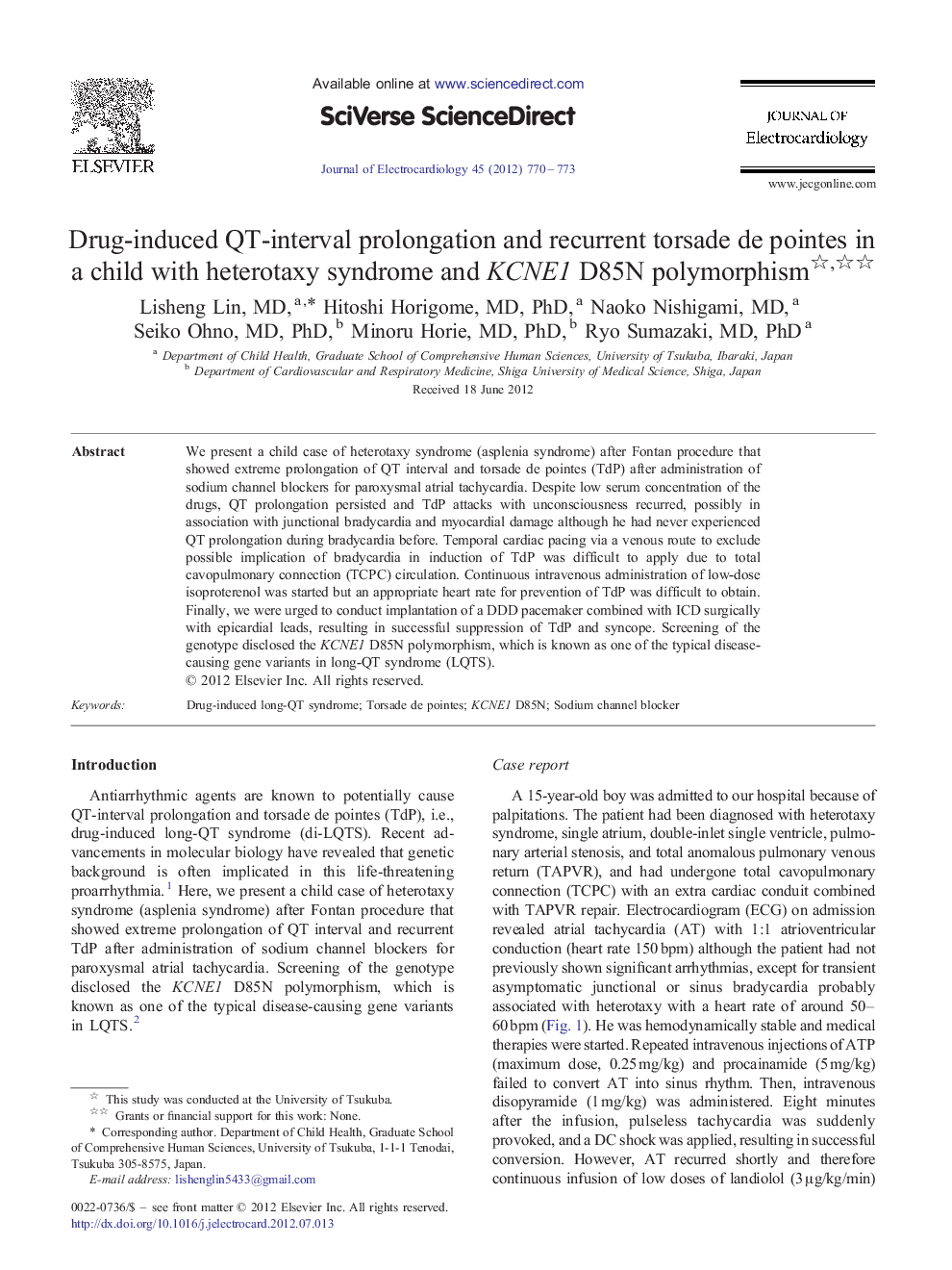| Article ID | Journal | Published Year | Pages | File Type |
|---|---|---|---|---|
| 2968114 | Journal of Electrocardiology | 2012 | 4 Pages |
We present a child case of heterotaxy syndrome (asplenia syndrome) after Fontan procedure that showed extreme prolongation of QT interval and torsade de pointes (TdP) after administration of sodium channel blockers for paroxysmal atrial tachycardia. Despite low serum concentration of the drugs, QT prolongation persisted and TdP attacks with unconsciousness recurred, possibly in association with junctional bradycardia and myocardial damage although he had never experienced QT prolongation during bradycardia before. Temporal cardiac pacing via a venous route to exclude possible implication of bradycardia in induction of TdP was difficult to apply due to total cavopulmonary connection (TCPC) circulation. Continuous intravenous administration of low-dose isoproterenol was started but an appropriate heart rate for prevention of TdP was difficult to obtain. Finally, we were urged to conduct implantation of a DDD pacemaker combined with ICD surgically with epicardial leads, resulting in successful suppression of TdP and syncope. Screening of the genotype disclosed the KCNE1 D85N polymorphism, which is known as one of the typical disease-causing gene variants in long-QT syndrome (LQTS).
